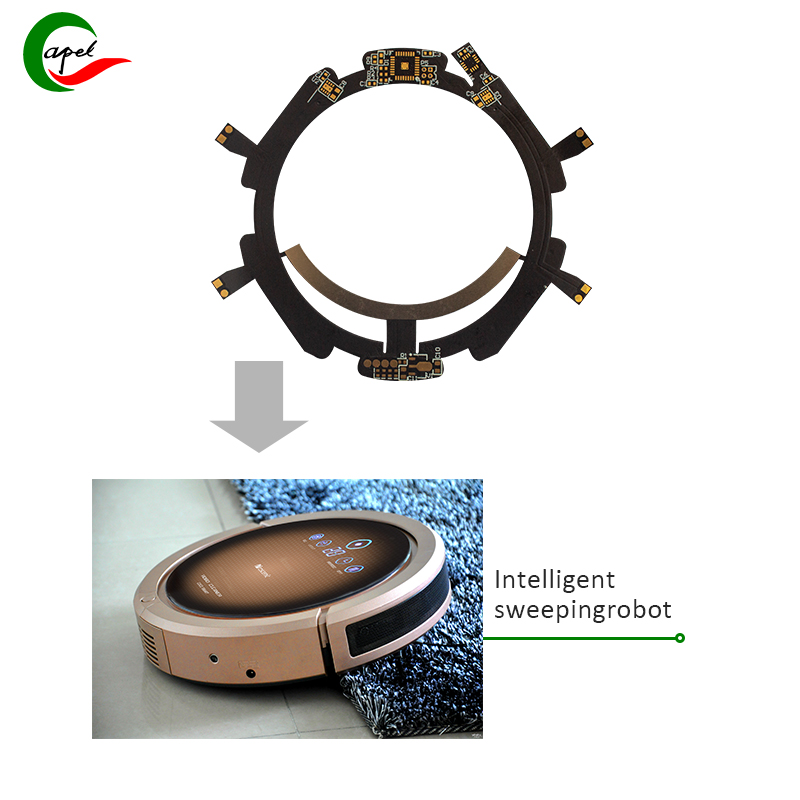As an AI circuit board engineer, I know the importance of cutting-edge technology in promoting the development of the AI industry. In recent years, the demand for more advanced and complex artificial intelligence systems has skyrocketed, and it is clear that traditional circuit board designs are no longer sufficient to meet the evolving needs of the industry. This article will explore the important role of rigid-flex boards in the transformation of the artificial intelligence industry and how these innovative circuit boards can enhance the functionality of artificial intelligence systems.
Introduction: Rapid Development of the Artificial Intelligence Industry
The artificial intelligence industry has seen significant growth in recent years, with applications ranging from self-driving cars and robotic manufacturing to natural language processing and facial recognition. Rapid advances in artificial intelligence technology are reshaping numerous industries, including healthcare, finance, and consumer electronics. As demand for AI-driven solutions continues to surge, the industry requires more advanced and efficient hardware to support the complex algorithms and data processing requirements of AI systems.
The Importance of Circuit Boards in Artificial Intelligence: Catalysts for AI Systems
Circuit boards are the foundation of AI systems, facilitating the flow of data and electrical signals within the hardware. The performance and reliability of these boards are critical to the overall functionality and efficiency of AI applications. As the demand for more compact and powerful artificial intelligence systems continues to grow, traditional rigid PCBs are proving insufficient to meet these requirements. Rigid-flex PCBs, on the other hand, offer revolutionary solutions to the limitations of traditional circuit board designs.
Understanding Rigid-Flex PCB: The Fusion of Rigidity and Flexibility
Rigid-flex PCB is a hybrid form of circuit board that combines rigid and flexible substrates to provide a versatile and adaptable platform for complex electronic designs. These innovative circuit boards are constructed using a combination of rigid layers and flexible materials, allowing them to bend and conform to the shape of the device while maintaining the rigidity required for component placement and electrical connections.
Advantages of rigid-flexible PCB: providing support for AI hardware
Rigid-flex PCBs offer several key advantages, making them ideal for AI hardware applications. These benefits include:
Space-saving design: Rigid-flex PCBs enable designers to create compact and space-saving layouts, making them ideal for AI systems that require a high level of integration in limited space. The flexibility of these boards allows for more creative and innovative designs, helping to develop smaller, more portable AI devices.
Enhanced reliability: The flexible nature of rigid-flex PCBs reduces the need for additional connectors and solder points, thereby minimizing the risk of mechanical failure and increasing the overall reliability of AI hardware. This is particularly important in AI applications where uninterrupted operation is critical, such as medical diagnostics and self-driving cars.
Improve signal integrity: Rigid-flex boards provide superior signal integrity, reduce electromagnetic interference and enhance the overall performance of artificial intelligence systems. The design flexibility of these boards allows for optimized signal routing, enabling more robust and efficient data processing within AI hardware.
Durability and longevity: The rigid-flex PCB’s sturdy construction makes it highly durable and able to withstand mechanical stress and environmental factors. This durability is critical for AI applications operating in challenging conditions, such as industrial automation and aerospace, where reliability and longevity are critical.
Case study: Rigid-flexible PCB implementation in AI hardware
To further illustrate the impact of rigid-flex PCBs in the AI industry, let’s examine real-world case studies of their implementation in AI hardware applications.
Capel’s case study: Rigid-flexible PCB implementation in AI hardware
An artificial intelligence company specializing in autonomous aerial vehicles seeks to develop next-generation drone navigation systems that provide advanced real-time data processing and decision-making capabilities. Traditional rigid PCBs used in previous drone models limited design possibilities and hindered the integration of additional sensors and processing units. Capel’s engineering team recognized the need for a more flexible, space-saving circuit board solution to meet the changing needs of the autonomous drone industry.
By using rigid-flex PCB technology, the Capel design team was able to create a compact, lightweight circuit board layout that seamlessly integrated with the physical structure of the drone. Rigid Flex The flexible nature of the PCB allows the circuit to conform to the shape of the drone, optimizing the use of available space and reducing the overall weight of the navigation system. This enables the integration of advanced sensors and processors, enhancing the drone’s navigation capabilities and real-time data processing performance.
The superior signal integrity and reliability of rigid-flex PCBs have proven critical to ensuring uninterrupted communication between onboard artificial intelligence systems and external data sources such as GPS satellites and environmental sensors. The durable structure of the rigid-flex PCB provides the necessary elasticity to withstand the mechanical stresses and vibrations encountered during drone operation, thereby contributing to the long-term reliability of the navigation system.
The successful application of Capel rigid-flexible PCB in autonomous drone navigation systems has brought significant progress in artificial intelligence hardware technology. Rigid-flex PCBs increase design flexibility and reliability, allowing the AI company to deliver cutting-edge navigation systems that surpass the capabilities of their predecessors, setting a new standard for autonomous aircraft in the industry.
Conclusion: Embracing the future with rigid-flexible boards
In summary, the AI industry will benefit greatly from the adoption of rigid-flex PCB technology. These innovative boards offer a range of benefits, including space-saving designs, enhanced reliability, improved signal integrity, and durability, making them important enablers for the development of advanced AI hardware. Through practical case analysis, it is clear that implementing rigid-flex boards in AI hardware applications can unlock new possibilities for innovation and push the industry toward the next frontier of technological advancement. As an AI circuit board engineer, recognizing the transformative potential of rigid-flex PCBs is key to shaping the future of the AI industry.
Post time: Dec-16-2023
Back







